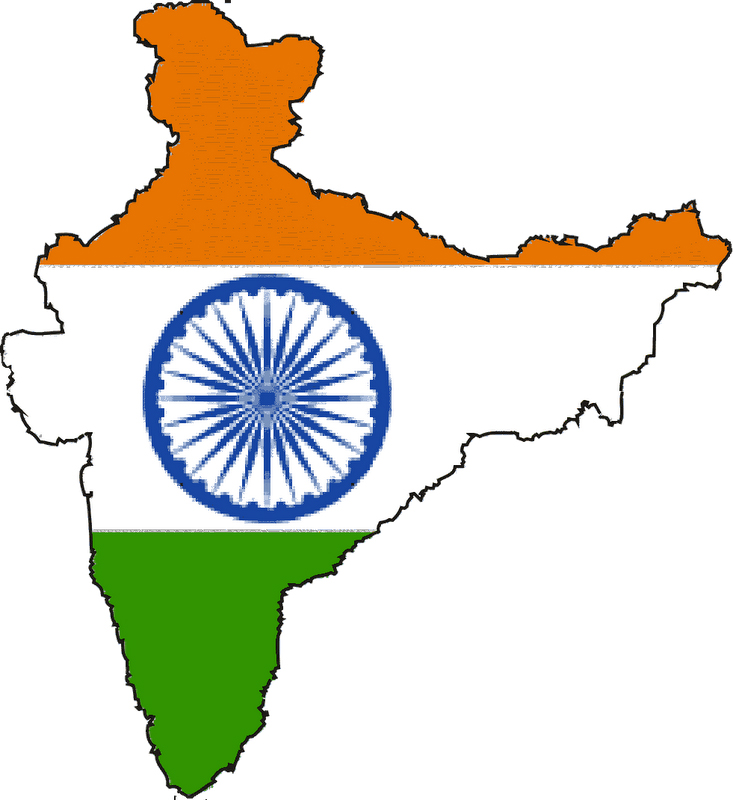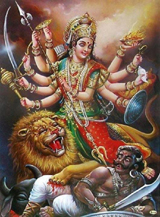Think it over
Social pathology: changing the mindset
Abstract
Crime against women is one form of social pathology that is seemingly on the rise. It is often believed that its roots lie in the inherent socio-cultural fabric of a society where inequality of genders serves as a common matrix to breed such crimes. The phenomenon has to be however examined and understood at various levels and a comprehensive remedy found to stem its tide.Departing from equality
Crime against women is neither a modern nor, as some may believe, an ancient relic of our hoary past. The ancient tradition, in India at least, worshipped women as Shakti or Power. She saw in the woman an embodiment of all that was sacred and beautiful and good. Women in ancient India participated in every sphere of life and action including war, governance of the kingdom, martial arts and sciences. A significant number of Vedic hymns can be attributed to women ṛṣikas. It is true however that few names have survived, but these few are representative of a way of life and culture. The paucity of names may well be attributed to the simple fact that womankind in general have preferred to remain in the background. Still, it is worth remembering the homage paid to a woman in the country’s past by naming the once mighty nation after the name of a child born out of wedlock, the legendary king Bharata born of Shakuntala whose glory has been sung by none other than Kalidasa. Also we have significant names of women that have survived the onslaught of time, names by which one can swear, names held dear and sacred to the Indian psyche, and as is said, names that made even the gods jealous and appear small. The names of Savitri, Sita, Anusuya, Draupadi, Gargi, Arundhati, Lopamudra, Maitreyi, Mandodari, Tara, Uloopie stand out prominent among many others. A whole side of spiritual practice was dedicated to the feminine side of nature under the name of tantra, worshipped and conjured in the powerful images of Durga, Sarasvati, Kali, Uma, Ganga. India has put the ultimate seal of the feminine by declaring the nation in feminine terms, Bhavani Bharati who presides over the land of Bharatvarsha.
Equally, we find that the modern mind is growing sensitive to gender equality, not only among women but what is a happy sign, among men as well. The reasons may be many and range from improved education, an influence of Western culture, a widening of outlook due to a freer mixing of people from different lands, but perhaps most of all to the Time-Spirit that calls for an equality and freedom of various groups of mankind including gender-based differentiation and segregation. Perhaps Mother Nature is preparing for a new type of humanity that may well harmoniously balance and combine the feminine and the masculine elements within us without necessarily resorting to external means for this purpose. For what we know as man and woman is nothing but an external differentiation of two modes or poises of nature, what was termed by the ancient yogis as the puruṣa and prakṛti principles or the yin and yang, the active and the passive, the skyward and the earth-bound aspects of our intricate psychology. Deep within, the soul has no gender but for the purposes of the play of life, Nature creates the differentiations. Still the differentiations are not rigid boundaries and each type can change to the other, psychologically at least, by bringing out the hidden and suppressed element inside. As modern biology also confirms, we are all unisex in the womb until a certain stage. Later on, the differentiation begins to take place and goes on until late puberty. Society and conventions then complete the process or fix it rather rigidly. Otherwise there is no reason to assume that a woman cannot undertake all the functions that are presumed traditionally masculine though man cannot do the same since childbirth remains a prerogative of the woman. Nevertheless, modern times are liberal and the winds of democracy are blowing all over. To talk about gender inequality in these times is to be anachronistic.
Then where did all this treatment of woman as subordinate and later, even subservient to man, come from? Perhaps from the dark ages that saw the ascendance of certain civilisations (if civilisation one can call it) that treated women indeed as slaves and second-rate citizens whom God had made only for man’s pleasure and who were nothing more than a pastime distraction for men or a block to their progress, a cause of their downfall making it incumbent that they do not enter even the precincts of God. This surely is neither the India of old nor the India of modern times. It is a disease that we have carried over from our immediate past when a number of invasions and the threat to women from the invaders made us adapt to certain ways of life that could secure survival. In the bargain, we lost the original impetus of life that flowed into many directions in India of the ages. And in that life women had a prominent place and were certainly not treated as slaves or inferior subjects.
Balancing contraries
In fact it is India that had struck the right balance between man and woman. Even though every form of extreme was attempted and even accepted here, India could still draw a fine balance between the life of indulgence of gross appetites under the garb of freedom and another extreme of complete abandonment and renunciation of life and the impulse to live itself. Perhaps it is for this reason that all extremes converge on this land. It is here alone that they can be reconciled and the ultimate solution found.
How are we going to get to that with the problem of woman and the mistreatment they receive at the hands of some men? This mistreatment takes many forms, from treating women as pleasure objects, a toy for the indulgence of our grosser appetites, to treating them as slaves with their place confined to the home. All the rules of society are for the women and very few, if any, for men. The birth of a girl child is seen as a problem to be solved and not the welcome of a power that brings joy and harmony, love and light, strength and balance in our social and spiritual life. We cannot go back to the past for the simple reason that this past has been adulterated by many influences, — Greek, Islamic, Portuguese, French and English. What we have today is a mixture wrongly understood by the pundits and poorly presented to the modern generation. Equally, a blind aping of the feminist movement as it has shaped itself in Europe and America would be disastrous to our life in that India, unlike these other nations is much more spiritually oriented and inwardly inclined. Neither a blind conservatism nor blind modernity will show us the way. One must remember the great words of the Gita: ’Better it is to perish while following one’s own dharma....‘
Master key to authentic change
Perhaps the key lies here. Our master key is spirituality. It is a fall from this impulse that has led us to a slavery of various kinds, reducing the Indian race to a mass of superstitious people who were afraid of everything, — afraid of others, afraid of themselves, afraid of the gods, afraid of the elements, afraid of freedom, afraid of greatness, afraid of experimentation, afraid of the new, afraid and therefore fallen into tamas as helpless subjects. India must be reborn to its spiritual glories, reclaim its past spirit but give it new forms suited to the Time-Spirit. It must even venture into new domains of spiritual sight and insight and be bold enough to experiment with new forms and models of life and institutions that can help the growing spiritual impulse in man and woman. It is in a widespread awakening of the spiritual impulse that we must look for the right and lasting solution. But not the spirituality that declares life as an illusion, not the escapist tendencies that justify tamas under pretentious names, but a dynamic spirituality that is creative of a new life and can enter and transform every field of action and sphere of human endeavour.
But to do that we must recover the essence of the spirit of the past and the soul of the nation by discarding old and outworn forms that have become merely dead encrustations, losing any life in them. These forms are no more living truths but empty shells. We must instead discover the living truths of the Vedas and the Upaniṣads, of the great teachings of the Gita, recover them not only in ancient texts but as living realities of our own life and then with that power re-make our collective existence.
Therefore if we are serious about reducing crime against women, whose extreme forms are the kind of brutal rape that recently shook the soul of a sleeping nation, we have to adopt a multi-level approach. It is not enough to pass a legislation and then rest in peace going about our lives as usual. It is important to restore the right place of women not only as an equal but as a type of humanity suited to manifest a particular mode of the divinity within us. The pathologies that afflict a group-life are intimately connected to the group deviating from its own soul, its swadharma. When the soul-power of a nation as a collective unit goes down, then the worst aspects of nature come out of the dark subconscient where they had been hiding for long and these dark energies spring into action like hungry beasts upon unsuspecting individuals.
The roots of evil
Every factor that combines to create such brutal offences that jolt us at the very roots can be traced back to a general decline of the spiritual energy. Some of these recognised factors are an extremely impulsive nature characterised by a lack of control over one’s instincts, a lack of refinement leading to crudity in nature, a gigantic appetite for vital energies characterised by inordinate ambition, lust for power and money and domination, a rigid ego-structure that seeks its own instant gratification and is indifferent to the needs and suffering of others. It is this dim dark background that gives birth to certain unhealthy attitudes towards self and others, an attitude that seeks to grab instantly by force whatever one desires regardless of consequences to oneself and others. Sex, for such people, is more like an instant coffee to give a kick-start and nothing more, a means to appropriate a woman’s body for one’s momentary pleasure, an expression of domination and possession of an object for one’s use.
In ancient India, the term used for such a psychological type of primitive humanity was rakshasic and paisachic. Unfortunately, this kind exists in both genders but because out of the two crude impulses — sex and anger — men are more prone to sex crimes while women to crimes that involve anger. This difference may well be partly due to biological reasons and partly due to the gender roles assigned by society over long periods of time. This same crudity, a lack of refinement, the will to dominate and possess, also leads to mistreating women as slaves. But when this crudity is combined with a total lack of control over one’s impulses then sex crimes emerge into the open. Also, there are added factors such as alcohol and drugs that lower impulse control and frustration tolerance.
Now if we look closely at all these factors, we can clearly see that they arise out of three things. Lack of impulse control arises in minds that have not been trained or disciplined with the help of the faculty of reason. This itself is partly due to a lack of education, which among other things instils discipline and teaches us to use our reason. Law and legal measures do the same thing by forced outer means what education is supposed to do by subtler and psychological means. It is also partly due to our attitudes towards sex and women in general. There is a lot of misinformation regarding sex, thanks to a free flooding of pornography leading to unhealthy and even perverse attitudes towards this activity which would otherwise be a natural and even beautiful instrument in bringing two persons closer who are growing intimate through love. Then there are also the stereotypes that are projected and passively received by our subconscious minds through the media of cinema and television. Finally, there is often an unrecognised factor that plays from within. It is a combination of crass selfishness and a lack of refinement that the aesthetic and ethical sense brings to us. Crudity and its sister, vulgarity are the twin signs of undeveloped humanity. But when such a type is celebrated by the collective life through songs and dances that only cater to the gross and the ugly, then one must seriously consider that the malaise is growing deep within the society.
The age of crime
In passing, one may like to touch upon the issue of age with regard to crime. It is true that adolescence, especially when endowed with a bad heredity and poor upbringing, is a period when one is most likely to lack impulse control. This is partly due to the poor development of reason which is yet a budding force and will continue to develop through the entire period up to adulthood. In addition, there is an extra boost of certain gender specific hormones leading to a greater urge of passion. It is hoped that in most adolescents this rush passes off eventually leading to a more mature and rational world-view and greater self-control. While this is true, it needs to be admitted that the age limit of eighteen or sixteen is basically arbitrary, especially in the present context where for various reasons children are maturing faster. Given the various dangers that youth and adolescents face, from suicide, drugs and other forms of self-destructive behaviours to rash driving, accidents and other minor and major brushes with the law, there is surely a great need for some kind of a national programme for youth and adolescents.
Having said that, it must be noted that serious crimes, such as rape, are not connected to this natural maturing process. It is a distinct aberration whose exact causes are not known. To treat such a person at par with others his age and connect his heinous crime to merely his biological age and the process of maturing is an error of judgment. Most such adolescents suffer from what is termed in psychiatry as ‘anti-social personality disorder’ and will eventually continue to have more such brushes with the law. It is the difference between something that is like the difference between a natural process of growing and a constitutional defect. The two cannot be treated at par. Therefore there is a need to re-look at the way ‘juveniles’ have to be dealt with when the crime is serious enough. Probably a longer stay, up to ten years in a reformatory which combines regular studies, education, training in self-discipline and a regular follow-up on release may set the right note.
Need for a manifold approach
Our approach to free ourselves from this dark net of forces in which the group-life is caught has to be also many-layered. Law is important since very few are yet developed in reason and have learnt to exercise self-control. But law is incomplete without education that teaches us discipline and self-control as well as the right use of reason. Law is like an immediate corrective while education is a long-term preventive. In this context, one has to also look into the socio-economic factors that discourage education or make it inaccessible to certain sections of society. Education itself has to undergo modification and instead of simply training us to achieve our ambition, it should become a means to enlighten our members and to train us towards a better humanity. All this cannot be done without a spiritual touch, for if we believe and act that man is merely a developed social animal then we can expect very little more from him. But if we believe and act that we are living souls then the more this soul-sense grows within us, the more we grow in light and beauty and harmony and a selflessness and all else that is the hallmark of a developed humanity. Unfortunately, our present system is sadly lacking in this and is still very much oriented towards turning a man into a money-making machine equipping us with means to fight and survive in a dangerous world rather than helping us to grow and harmonise in a world that will grow beautiful with us.
As for our attitudes towards women, our entire society has to wake up and set an example. Men have to show by their actions that they respect women and treat them as equals and with dignity. But women too have to assume their responsibility and, instead of blindly imitating men and their vices, bring out their innate strength and reclaim for themselves their glory and their rightful place not only as equals but even more importantly as Shakti or Power, — power to organise and execute, power to feel and divine, power to love and harmonise, power of beauty and that silent strength which makes the mighty tremble before their gaze. Most of all, they have to once again bring out of their long-suffering hearts and manifest the twin powers that alone can change the world, — the power of love and the power of truth. Women are instinctively more suited to express these powers, while men are more suited to express wideness and freedom and abstraction of the intellect. The role of cinema and other social media in changing our stereotypes can never be over-emphasised. Simultaneously, there is a need to introduce some kind of a sex education that goes beyond merely preventing AIDS. It should include some dissemination of information about what can be termed healthy, normal and natural sex, which is a meeting of two personalities who love each other, to make their growing union more complete, more beautiful, more lasting with the invigorating touch of earth upon the heavenly angel that moves two hearts towards each other. Finally there is training and education of the aesthetic element in us, not only our speech and outer actions but also in our thoughts and feelings. Self-control leading to self-mastery, unselfishness, treating all as equals, inculcating the sense of the beautiful in everything, respect for every form of life however different it may be from our own, treating others with the same dignity that we demand for ourselves, reducing the element of greed and lust after money and power to satisfy our gross appetites, compassion towards others and a concern for the suffering and pain of others, the impulse to give and not appropriate are all simply the natural fruits and flowers of a spiritual self-culture that once dominated so much Indian thought, ethics and way of life.
It is, therefore, a renaissance of our deep sense of Indian-ness, our world-transforming, all-embracing spirituality that is needed. At least, that should be the way India should solve this problem and not merely by passing laws and legislations or a change in constitution. These things may be needed for greater leverage for the practical execution of the spiritual ideas, but in the end they are cosmetic if not followed up by the awakening of the very best in us through a right understanding and application of culture, through education and through what we have termed earlier as the accumulation of spiritual energies and their silent unseen pressure. This last bit should be left to those few who have the calling, but it is the most crucial element in diminishing not only the dark energies that have spread their tentacles everywhere but also for India’s very survival. Even a handful of genuine sincere men and women engaging in an inner tapasyā at bringing down and manifesting the All-Beautiful and the All-Powerful Truth in their lives will set a silent chain reaction from within and change the face of the nation from within outwards. Perhaps this is already happening and the recent uprising of women and youth against this onslaught of the crude and the ugly is simply an external manifestation of a growing spiritual current that has once again begun to flow as the sap of life in the Indian people. It seeks for truth and rejects falsehood. It seeks for love and rejects its ugly masks. It seeks for authentic power, the beauty that is not diminished or stained with age. It seeks the wisdom that is not taught in our schools and classrooms. It seeks to rebuild India in the image of its soul and not according to the ideas of freedom and liberty or of equality and brotherhood imported from the West. Let us hope that this fire of spirituality manifesting through the veil of idealism grows and spreads and overflows India and overflows Asia and overflows the world. As Sri Aurobindo and the Mother prophesied long back:
”[Question]: In 1919 Sri Aurobindo wrote that the chaos and the calamities were perhaps the pangs of the birth of a new creation. How long is this going to continue? In the Ashram, in India and eventually in the world?
“[The Mother]: It will continue until the world is ready and willing to receive the new creation; the consciousness of this new creation is already at work upon earth since the beginning of this year [1969]. If instead of resisting, people were collaborating, it would be quicker.
But stupidity and ignorance are very obstinate“(1)!
“India has become the symbolic representation of all the difficulties of modern mankind.
India will be the land of its resurrection — the resurrection to a higher and truer life”(2).
References
1. The Mother. Collected Works of the Mother. Cent. ed. Volume 15. Pondicherry: Sri Aurobindo Ashram Trust; 1980, p. 115.
2. The Mother. Collected Works. Volume 13. 1980, p. 376.
Share with us (Comments,contributions,opinions)
When reproducing this feature, please credit NAMAH,and give the byline. Please send us cuttings.








